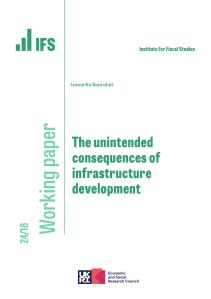After seven years during which coalition and Conservative cabinets have spoken with more or less one voice on fiscal discipline, political discipline seems to have fallen apart. The immediate demand is for an end to the 1 per cent cap on public sector pay deals. This is understandable. A few more years of the cap and public sector pay would probably start to reach historically low levels relative to that in the private sector. It’s not there yet though. It’s easy to forget that private sector workers have had it just as hard until now.
Understandable yes, but is it affordable? We spend an awful lot on employing all those nurses and teachers and doctors and soldiers and civil servants — about £180 billion each year. So another 3 per cent on public pay could cost something like £5 billion. By the end of the parliament, increases in line with inflation, or with private sector earnings, could easily cost twice that.
If that were the government’s biggest priority then it could probably afford to do it, even within its own current fiscal targets. On budget forecasts, there is £26 billion of headroom against the immediate target of getting borrowing below 2 per cent of national income by 2020. The longer term target to get the budget to balance by the “mid 2020s” is challenging, but a long way away. The country would hardly be bankrupt if the government were to borrow a few billion more than currently planned.
It’s not as easy as that though. First, there is the inevitable uncertainty over those fiscal forecasts and the additional uncertainty over the unknown consequences of Brexit. Things could easily turn out worse than expected. That’s one reason why Philip Hammond has left himself headroom against his target. The chancellor won’t want to use up much of that headroom in the very short term. If bad things do happen to the economy he may want to have space to offer some fiscal stimulus.
Second, there will be other demands for spending increases. That’s partly a statement of the current political reality but also a consequence of spending restraints and their effect on the quality of public services. In the face of overwhelming evidence of need Mr Hammond found more money for the prison system in last year’s autumn statement and more for social care in his March budget.
Other public services, notably the health service, are under pressure. The public sector rode out the first few years of austerity relatively comfortably. It is now struggling. There will be other, possibly urgent, demands on the public purse.
The problem for the chancellor is that while he might be able to afford a few billion for public sector workers, he will not be able to afford to meet all the potential demands — not without busting his own fiscal rules or raising taxes. His chances of getting substantial tax increases through a parliament in which the Conservatives barely command a majority look slim. One option would be not to implement the cut in corporation tax to 17 per cent from its current 19 per cent, or, indeed, to return it to the 20 per cent rate that it was until this April. That would cover the cost of a 3-4 per cent rise in public pay. One penny on the main rates of income tax would achieve much the same.
The issue, as ever, is one of priorities. The answer to the question of whether the government can afford this, that or the other is almost always yes, if it chooses to. But choices involve trade-offs, they involve doing more of this but not more of that, or indeed less of something else.
Mr Hammond and the cabinet will have to weigh all this up before deciding where higher public pay sits on that priority list. Higher pay will look, and be, more sustainable if it comes out of a rational process that makes it clear why that and not, say, reversing benefit cuts or more money for the NHS, is a priority. And, if there are other priorities they want to fund as well, then higher borrowing will also be more palatable if it is seen to come out of a controlled and rational process. Britain can still borrow remarkably cheaply and we might choose to use that fact to increase spending in the short run.
The risk is that if this all starts to look like a free-for-all, with no plan, no prioritisation and no sense of how to get things back on track in the medium run, then that cheap source of borrowing may get less cheap. This year we will see the first of Mr Hammond’s autumn budgets. He is going to have to corral colleagues into accepting some prioritisation and set out some credible plans for the next few years. He probably needs to go through a spending review process.
That process might well involve agreeing to higher pay and more borrowing than is currently planned. Wherever it ends up, it is only by setting out and agreeing on all the choices together that the government has a shot at making good choices. It is also the only way of managing the public finances.
Paul Johnson is the director of the Institute for Fiscal Studies, follow him on twitter @PJTheEconomist.
This article was first published by The Times and is reproduced here in full with permission.








